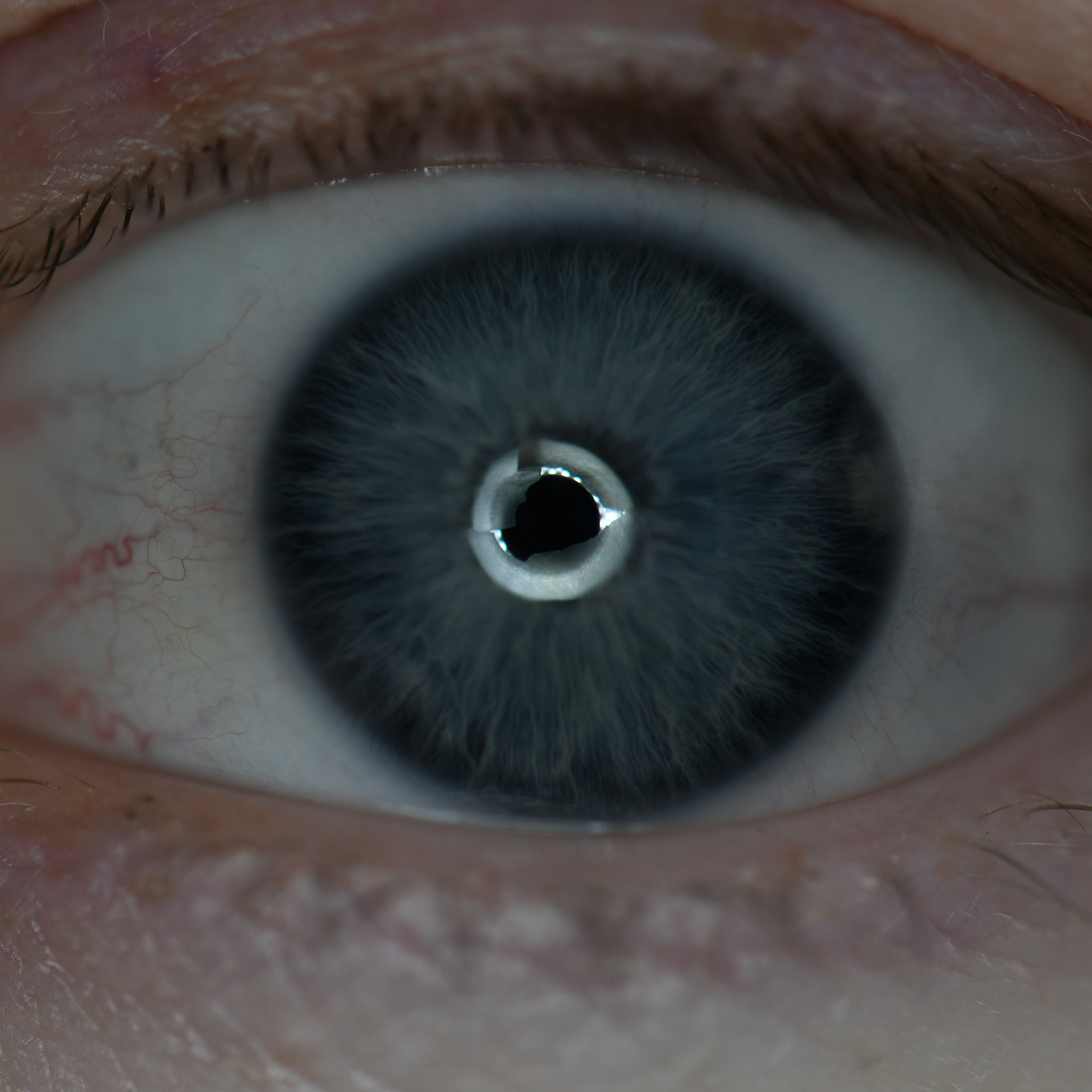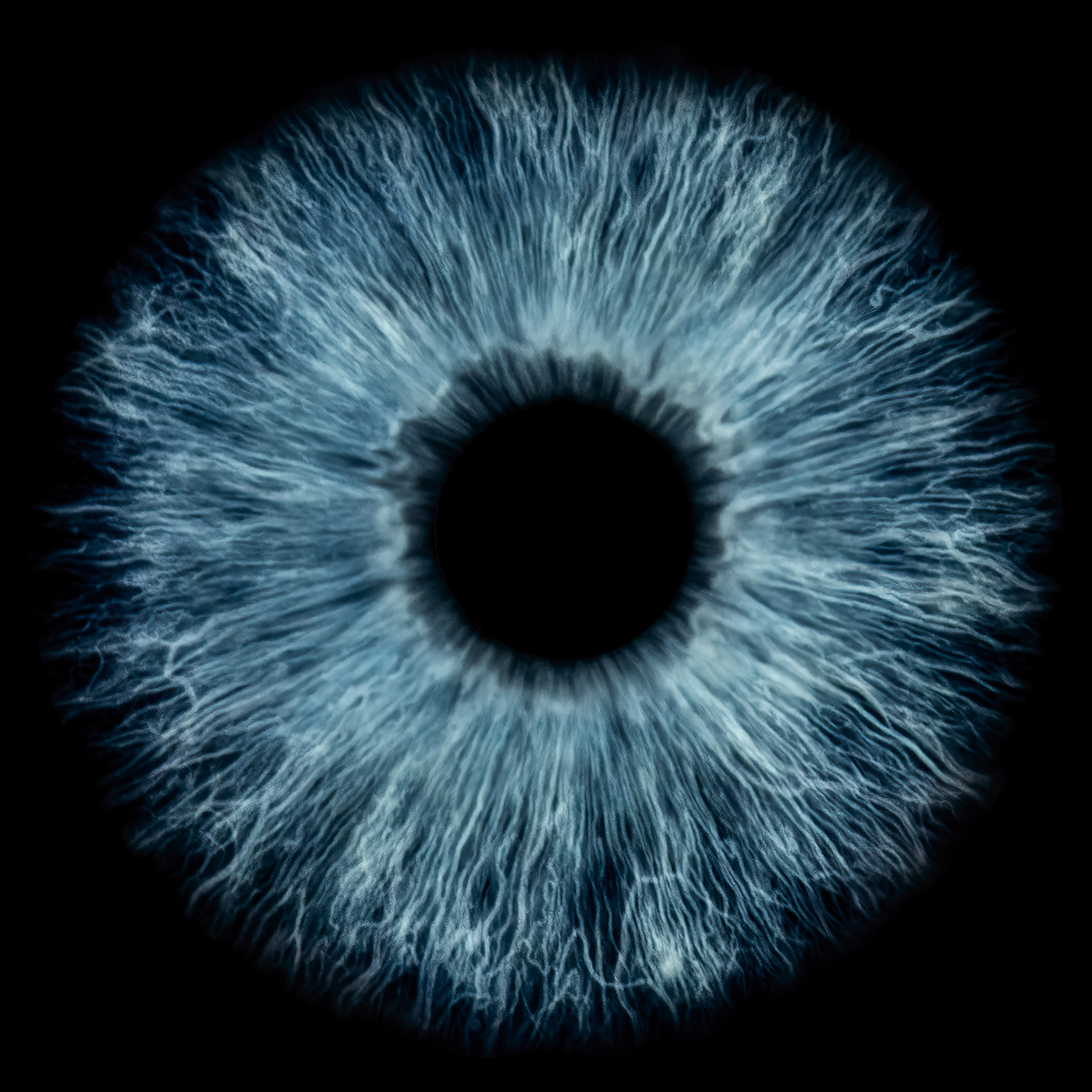I recently took a trip to Melbourne, where I came across a stall offering prints of your own iris. I was intrigued, naturally. I could see their setup consisted of a regular Nikon DSLR, macro lens, and ring light mounted to the lens. Someone was sitting for a photo when I walked past, and they had their chin and forehead on a rest, similar to when you go to the opticians. They were also wearing some sort of glasses.
Of course, my immediate thought was: I could do that! So I had a go.
First off, let me tell you that it's harder than it looks! Especially when trying to photograph your own eye. This was really my main problem throughout all my attempts. On my first try, I took a single shot at 1/100 sec, f/8, ISO 100 and used a Nikon D850 with 105mm macro lens with a continuous ring light. I had the camera on a tripod and it was tethered to Lightroom so I could see my shots and use live view. Unfortunately, the live view was too laggy to be useful, but it did help me get roughly in the right place to start shooting. From there, I just used the 'spray-and-pray' approach, releasing the shutter remotely with Lightroom.
When my vision had returned from staring into the ring light, I chose the best image and processed it. I used Adobe Camera Raw to raise shadows and add contrast, clarity and texture, whilst adjusting white balance and colour profile. I used Photoshop to cut out my iris and add a white background, as well as removing the reflection from the ring light. Because I'd cropped in quite a lot, I ran the image through Topaz Gigapixel to increase the size. I then ran it through both Denoise and Sharpen AI. This really affected the colour for some reason. What I ended up with is quite a noisy, fake-looking image of low-quality :-(

SOC capture

First attempt fully edited
After getting frustrated and taking a little breather, I decided to have another go. This time, I took my friend's advice and stabilised my head by resting my chin on a desk organiser. I decided to capture multiple planes of focus with the intention of stacking them, so I changed my f-stop to 5.6. Instead of moving my head to change focus, I made tiny adjustments to the lens's manual focus ring (this would have been the obvious way to do it in the first place, but I don't like to make my life easy). This was a significant improvement, and I got a lot more shots in focus. In the end, the depth of field was not so shallow, and I only stacked 2 images.
This was a reasonable result, although it needs to be brightened up, but I still thought I could do better. So I did what I should have done in the first place: research. I found the below video very useful. It points out a few things I was doing right, as well as a few that I was doing wrong. I swapped the ring light for an LED continuous video light - a small, hard light source - and positioned it at 90 degrees to my right. This was to add dimension to the structure of my iris. I changed my f-stop to 9 and gave up on stacking. I reduced the shutter speed and increased the ISO to compensate for the reduction of light.
Below is my final (?) attempt. I'm still not happy with the image quality. It's too noisy, even after running it through Denoise, and lacking in detail. It looks more like an AI-generated image from an older version of Midjourney where everything looked stringy. I believe I could get a better result if I used my Sony A7r IV instead of the Nikon, because of it having 1/3 more megapixels and the sensor having a larger dynamic range. There's a clear improvement in each attempt and I think I could get there eventually if I keep practicing and using my preferred equipment. It would be so much easier if I was taking a photo of someone else's eye! Any willing volunteers?!
Final? attempt, finished edit
UPDATE
I just couldn't stay away... I feel this will be a continuing project until I'm able to get the quality of image that I've seen elsewhere. I'm still unhappy with the finish to the below image, but I think it's an improvement again. I tried a different setup - this time using flash, which seemed to work far better than continuous lights (as it normally does). However, I got a lot of surrounding reflection from the room that I had to edit out. I love that I can see a lot more bumps and lumps around the iris. This single shot was taken at f/16, 1/100 sec, ISO 100 and a small Godox speedlight set to 1/4 power.
It is so much easier when capturing a friend's eye. Same technique and settings, added a little sprinkling of extra sharpening. And why are her eyes so much more interesting than mine?!
